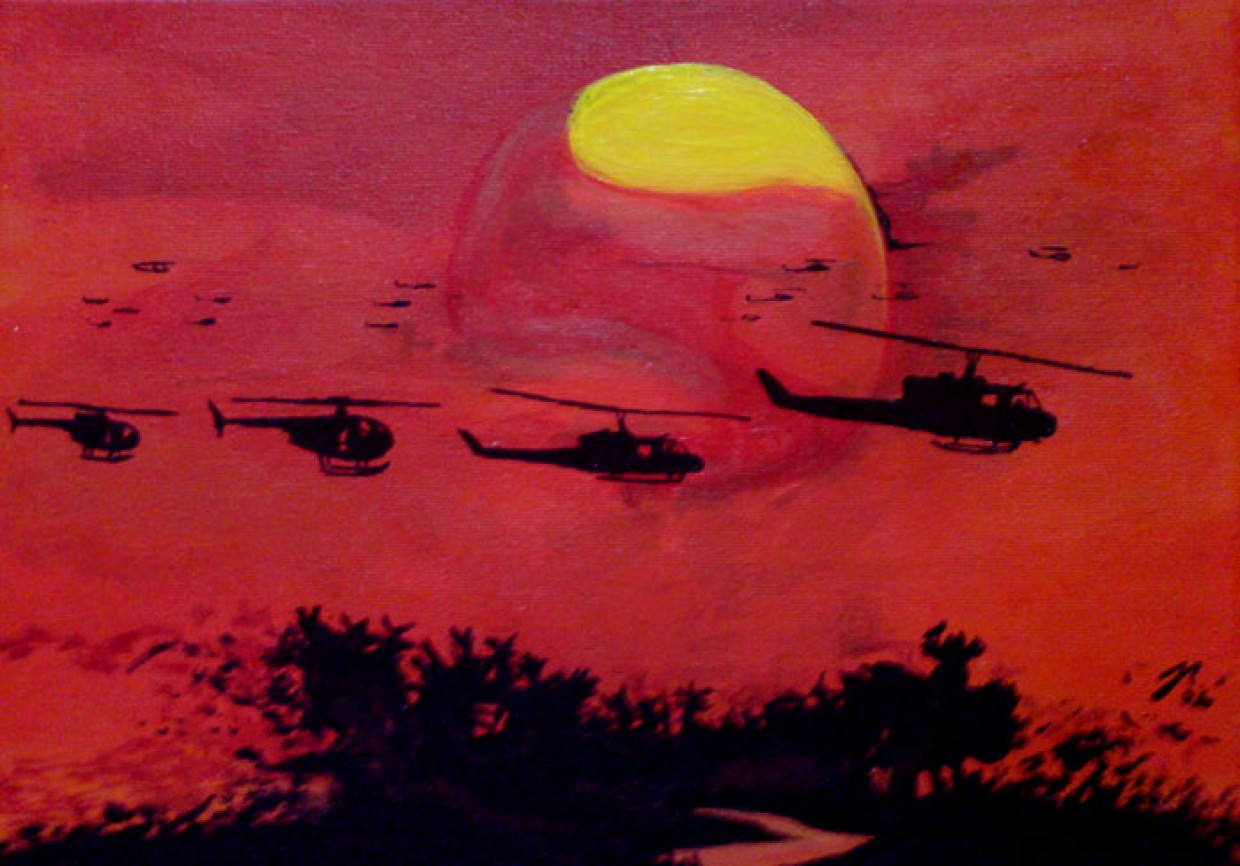
When I first watched the war film “The Thin Red Line” I was struck by its metaphorical stills surrounding death. The film, itself, revolved around the division between humanistic idylls and the madness, nihilism, and cruelty sprung from war. The scenes staggered between slow, shining pans of nature and peace, emphasizing all the beauty and light that we cannot see as people lost in the whirlwinds of strife. The stills capturing the sublimity of life were juxtaposed with the ugly depths of human depravity. The fatalism evident in this particular still has haunted me since I was first enraptured in the film.
A human face sinking into dirt suggests numerous, philosophical implications. I find the dehumanizing detritus of war to be fully crystallized in this image. The sight of a soldier, stained and ruined, sinking in his coffin upon the battlefield is a profound visual extension of the true horrors of war. The eyes of the soldier reflect nothing and he is alone in his death. The self-annihilation and estrangement I feel projected from his lifeless eyes is furthermore accentuated by the lack of a body. The corpse is left stranded and abandoned in the middle of nowhere, with only the eyes blankly gazing out from below. The corpse’s descent into the dirty, dark ground also reflects a void of humanity—a sense of gradual loss in humanity and the decay into a hollow man.
War inexorably robs soldiers of their humanity. War trauma surpasses physicality and envelops the soul and mind. In killing a man, you also murder a part of yourself. The image is quite strikingly dark and truly haunting to glimpse, but I find that as a society we often try to distance and desensitize ourselves from the brutalities of war and human darkness. I believe such visuals should be circulated in their raw form, so that the ineffable horrors of war and genocide never escape us.
Image: http://celluloidoptimist.com/the-thin-red-line/
